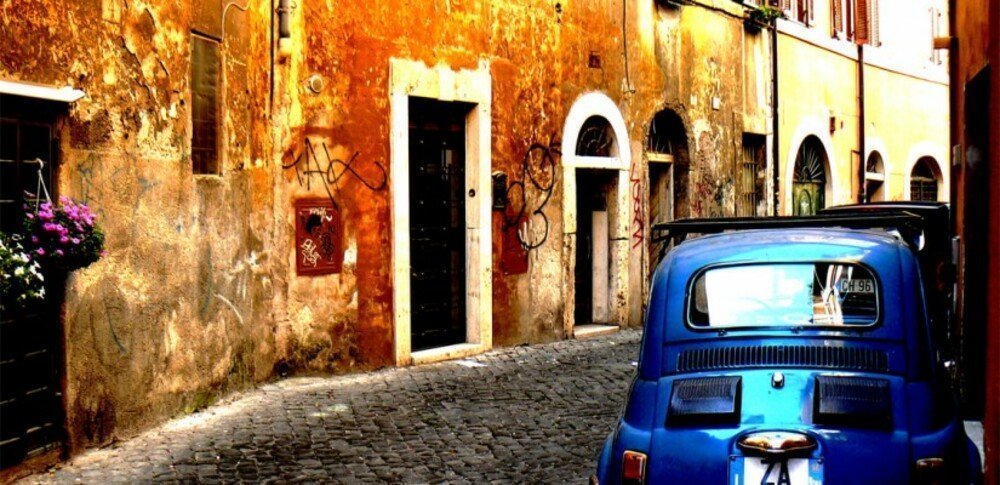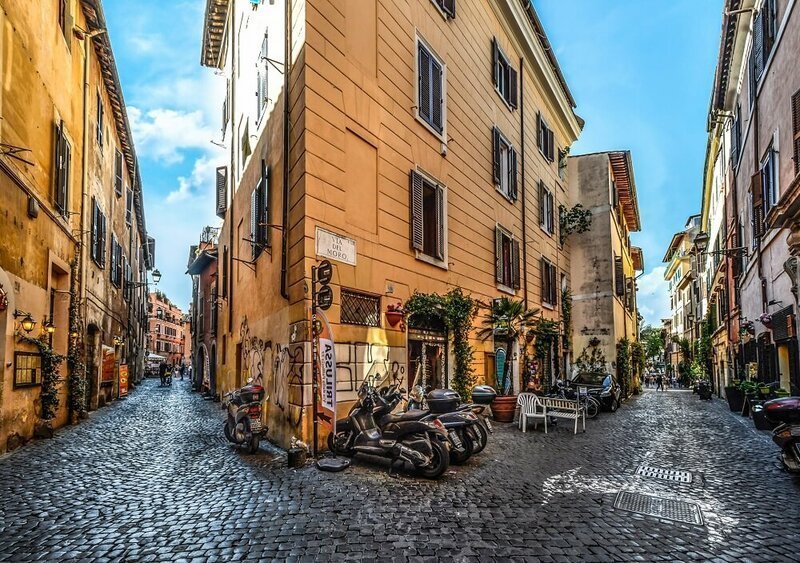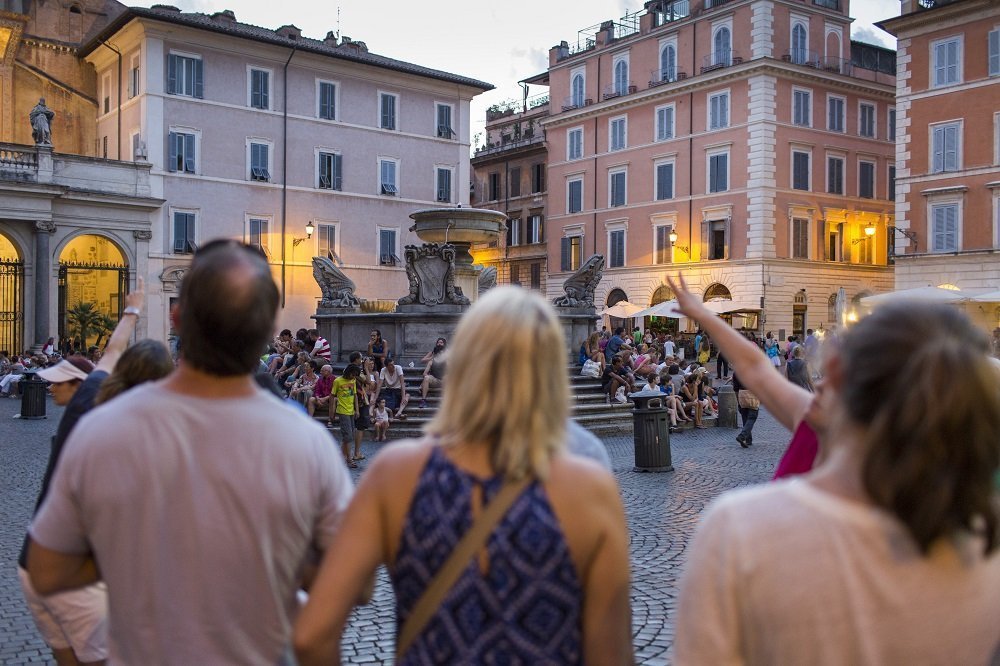Trastevere is among the most charming districts in Rome, and with this location along the Tiber River, it is the perfect spot for a romantic stroll or a Trastevere Food Tour.
Although this district does not have some of the more popular sites in Rome, such as the Colosseum or the Spanish Steps, this area transports its visitors back in time, and still has much to offer tourists that want to experience a unique and lively neighborhood in Rome. Come and explore Trastevere, the land “beyond the Tiber”.
History
Ancient and Medieval Trastevere
In ancient times the area of Trastevere was not included in the city of Rome at all. First occupied by the Etruscans, Trastevere was not as accessible to the rest of Rome because of the rushing waters of the River Tiber. At this point, the only possible place to cross the Tiber River was at the nearby Tiber Island.
This land was eventually settled by the Romans around the seventh century BC. Because it was so close to the river, Trastevere was mostly home to sailors and fishermen who had their ships docked in the small harbor located next to the River Tiber.
It was not until the late Imperial period, around 270 AD, that Trastevere officially became part of Rome when Aurelian included it within the ancient walls of Rome. Because of the many bridges built by the Romans, Trastevere was no longer as isolated from the rest of the city as it once was.
Much of Trastevere’s architecture that we see today was built during the Middle Ages. The now famous small, winding streets of Trastevere were created as more residents moved to this neighborhood. In the Medieval period, much of the poor in the city called Trastevere home, primarily because of its proximity to the Vatican. By living here, they hoped to receive benefits from being so close to the pope and other important Christian sites.
Janiculum Hill
Although not one of Rome’s famous seven hills, because it was not originally part of the city, this eighth hill of Rome still provides a great panoramic view of the city. Janiculum Hill was named after the Roman god Janus, because of the shrine devoted to him on the hilltop. The hill also served as a strategic military post meant to keep an eye out for any invading Etruscans.
But today’s visitors to the Janiculum Hill do not have to worry about military pursuits, but instead can relax and enjoy their beautiful reward after the long trek up the hill.
The Churches of Trastevere
Every neighborhood in Rome has an abundance of churches, and the same goes for Trastevere. Below are two of the best known churches in this part of Rome.
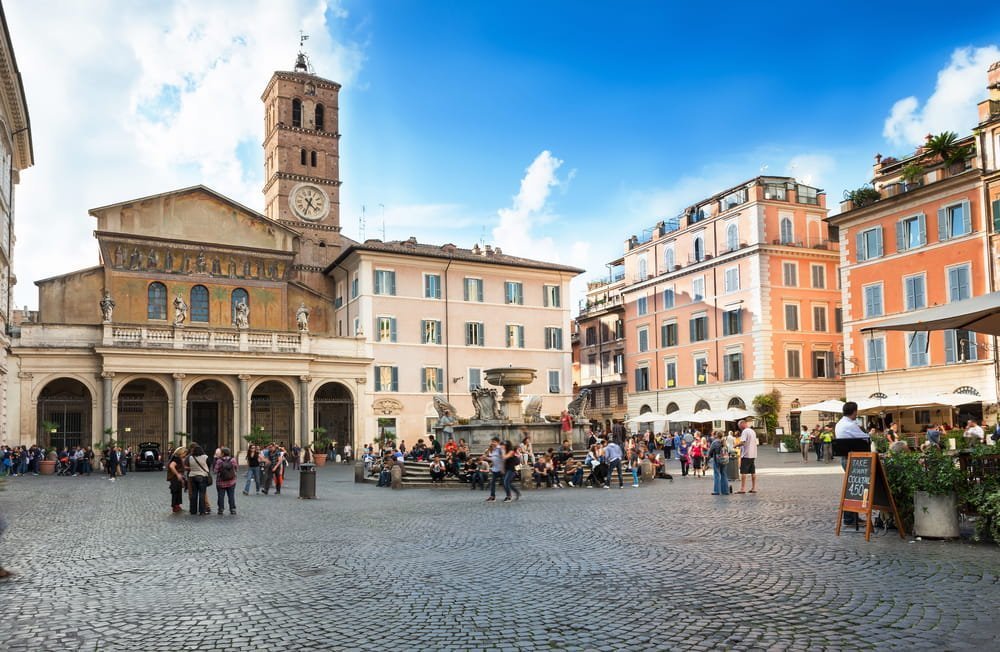
Santa Maria in Trastevere is a significant building in several ways, and is located in the center of Trastevere. For the Christian community, this location is believed to be the first place where Christianity was practiced in Rome. The other important additions to this church are the variety of different columns that line the building’s interior.
A common practice once Christianity was adopted in Rome, parts of pagan Roman temples were taken and used to build many churches, including the columns from the Baths of Caracalla currently in Santa Maria in Trastevere.
The church of San Crisogono is another interesting church in Trastevere because of its variety of additions and reconstructed sections to the church. Once they are inside, visitors can see the amazing artwork and the mosaic on the ceiling and the floor. They can also compare parts of the church that were built throughout Rome’s history.
For example, some of the original entrance to the church dates back to the Roman Republic, while the detailed ceiling was added in the seventeenth century, making the Church of San Crisogono a truly intriguing place to experience.
Tiber Island
Although it is a small area of land, this island has a long history of its own. Starting in 291 BC, Tiber Island was home to a temple of Asklepion, a god of healing.
So how did an island become the site of an ancient temple?
As the legend goes, a plague was spreading in Rome, and it was decided that Asklepion must be consulted to put an end to the sickness. While the group sailed along the Tiber River, a snake on board (a symbol of healing even today) left the ship and instead swam to Tiber Island, where the temple would eventually be built.
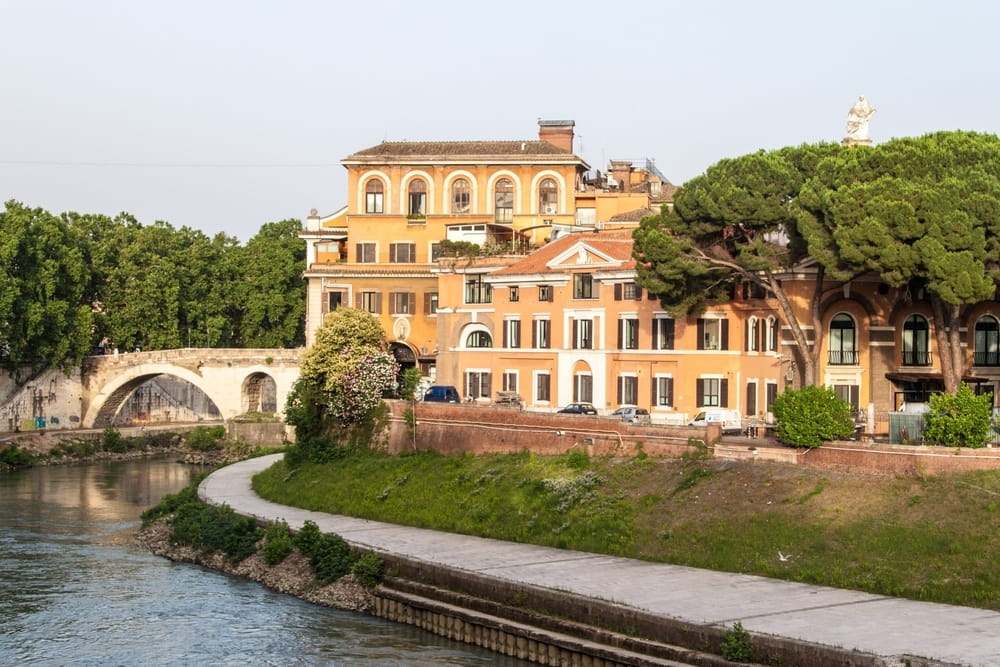
In the tenth century, the temple of Asklepion, like many ancient temples before it, was converted into a church, specifically the Church of San Bartolomeo all’Isola. And like Santa Maria in Trastevere, the columns on the inside are believed to be from the original temple on that site.
But Tiber Island’s association with healing did not end with the temple. In the sixteenth century, the island became the site of the oldest hospital in Rome - Fatebenefratelli - which is still there today.
Useful Info
OPENING HOURS:
Always Open Did you know? Several famous movies were shot in Trastevere. The most famous in Italy is the Bicycle Thieves - a heart-tugging masterpiece of Italian neorealism. A rather more well-known movie in the English-speaking world, however, is Woody Allen's recent flick, To Rome with Love. → Find out more through our Rome Movie Set tourFAQs
What is there to do in Trastevere?
Whether you're a passionate foodie, culture vulture, or party animal, Trastevere offers something for everyone.
A Taste of Trastevere
In modern times, Trastevere has become one of the trendiest spots in Rome. Frequented by locals and tourists alike, its charming winding alleys make it ideal for an evening walk. Trastevere’s cheap bustling bars are great places for drinks, and the many dining options make it an excellent spot to taste typical Roman dishes.
But beware, while their several excellent restaurants in Trastevere, there are also several tourists’ traps which take advantage of the favorable location to serve modest food at a dishonest price. Make sure to ask a local where the right spot to enjoy a gorgeous meal is, or take a Trastevere Food tour to discover the best local dishes to try while experiencing this charming neighborhood in Rome.
Trastevere's Nightlife
Visit Trastevere on a Friday or Saturday night and its streets are awash with students and locals. Spilling out from the hundreds of bars and restaurants that line its winding streets, they create a party atmosphere that continues pretty much unabated right through to the early hours.
Joining them promises to offer an authentic Roman experience. Whether that means kicking back in a cocktail bar or grabbing a drink and sitting around Piazza Trilussa or Piazza Callisto in the summer months, Trastevere rivals only Testaccio when it comes to providing the beating heart of Rome's nightlife.


